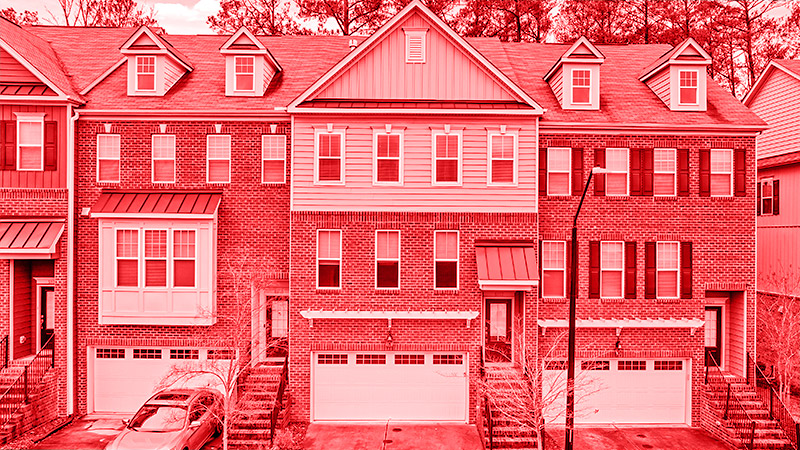Don’t worry if you’re ready to purchase your new home but have been surprised that the lender is withholding some of the promised funding – this is just a temporary thing and is called “mortgage retention.”
Although the term “mortgage retention” feels intimidating, you can still buy your dream home.
Below you will find a complete guide on what mortgage retention is, how it impacts your ability to buy a property, and the impact it can have on your mortgage application.
What is Mortgage Retention?
Mortgage retention occurs when a lender approves the loan but does not release all the money right away. Instead, a portion of the funds is held by the lender until specific criteria are met.
A lender typically offers this when their valuation survey reveals that the property needs some work to match its condition to the current asking price.
However, that is only required mainly for structural issues, not minor repairs.
If the lender imposes mortgage retention, the buyer must find other ways to access the retained money. Sometimes the vendor may get the work done.
Mortgage Retention Survey
The process of buying a house requires surveyors to conduct a valuation to determine whether the property’s value matches the listing price (this is called state value). Mortgage lenders use the results of this valuation survey to decide how much you can borrow.
Lenders sometimes accept the value of a house in principle but then impose mortgage retention after the survey is complete. The mortgage retention ensures that the property provides adequate security for the loan.
This isn’t a bad thing, but it can feel like a bad thing to you when you’re faced with the challenge of purchasing a home with less money than is needed.
Related guides:
- When was my house built?
- Buying out a sibling from an inherited house
- How long does it take to release mortgage funds?
- Does a valuation mean that a mortgage is approved?
- Mortgage lenders that accept benefits
- Can I extend my interest-only mortgage term?
The catch
You must make up the difference if you decide to carry on with the purchase even after the mortgage retention. The difficult part is that you will need money to complete the necessary work.
In most cases, the amount retained depends on how much value the work will add to the house.
If, for instance, fixing a leaky roof would increase a property’s value by £5,000, the lender could offer a mortgage with a £5,000 retention. The amount will be credited to your account once the new roof has been installed.
Possible Solutions
You might be wondering if there’s a solution. How can you get the sale to go through with retention that’s withholding funds?
One thing to consider is that the seller might be open to negotiating to a lesser selling price or they will get the work done.
You may be able to renegotiate the mortgage retention with the lender if you find a contractor ready to begin the work as soon as the home purchases are complete as specialist reports may indicate a lower cost of works.
Need more help? Check our quick help guides:
- Reasons why a mortgage could be declined on affordability.
- How reliable is a mortgage in principle?
- How do joint mortgages work?
- Can you get a mortgage on a fixed-term contract?
Common Causes for Mortgage Retention
Damp and mould are common causes of mortgage retention. Mortgage retention amounts and work required to rectify the issue will ultimately depend on how severe the problem is.
There are other reasons for a lender to retain your funds, such as:
- Structure defects
- Electrical rewiring
- Asbestos removal
What is a 100% Retention Mortgage?
In some cases, a surveyor might recommend a 100 per cent mortgage retention until the property’s issues — often structural — are fixed.
For example, you may come across full mortgage retention if the property you are about to buy needs significant renovation. A lender may not consider releasing funds to a property that is utterly uninhabitable in its current condition.
Before you buy a house that has significant issues, it’s recommended that you do a full structural inspection.
If your lender imposes full mortgage retention, this will likely keep happening to other potential buyers who try to purchase the same property.
However, if the seller cannot sell the house under current conditions, you can negotiate with them. Also, seek expert advice and weigh all pros and cons before making a decision.
In case you decide against purchasing the property, you may withdraw your mortgage application.
Related guides:
- Mortgage 5 times salary.
- Can you get a mortgage on land?
- Refurbishment mortgages.
- Part and part mortgages.
- HMO mortgages.
Mortgage Retention
Your lender will conduct an affordability assessment and check your credit history, employment status, and other factors to determine your eligibility.
Once that’s done, they will review the results of legal searches and the valuation report.
As mentioned before, if that valuation report shows significant issues to the property, the lender will issue an offer of advance listing all conditions for the mortgage, including the portion retained.
Lenders may:
- Provide the total mortgage sum when you buy the property if specific work is completed within a specified timeframe.
- Initiate only part of the loan and pay off the remainder after the work has been completed.
- Retain the entire mortgage pending a structural engineer’s report.
Getting to the next step in the mortgage application process will require you to accept.
Call us today on 03330 90 60 30 or feel free to contact us. One of our advisors will be happy to talk through all of your options with you.

















